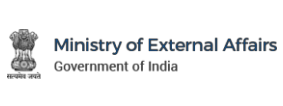"The Challenges Ahead for India's Foreign Policy" -Speech by Foreign Secretary, Shri Shivshankar Menon at the Observer Research Foundation, New Delhi
New Delhi
April 10, 2007
Prof. S. D. Muni,
Ladies & Gentlemen,
Thank you for asking me to speak to such a distinguished gathering of thinkers and opinion-makers this morning. The topic that was suggested, “The Challenges Ahead for India’s Foreign Policy”, lends itself to several and varied interpretations. Which challenges we choose depend upon what matters to us, i.e. our priorities. The primary task of our foreign policy is to ensure an external environment that is conducive to India’s transformation and development. To oversimplify, what are the issues and what kind of foreign policy would enable us to eradicate poverty, grow at 8-10% and transform India into a moderately well off state where our people can realize their potential?
Looked at in this light, broadly speaking there would be three sets of challenges: Firstly, ensuring a peaceful periphery; secondly, relations with the major powers; and, thirdly, issues of the future namely food security, water, energy and environment.
I
The first area of focus for our foreign policy is naturally our neighbourhood, for unless we have a peaceful and prosperous periphery we will not be able to focus on our primary tasks of socio-economic development. We must, therefore, accord the highest priority to closer political, economic and cultural ties with our neighbours and are committed to building strong and enduring partnerships with all our neighbours.
When we look around us today, each of our neighbors is going through accelerated internal political transformations. Bhutan is consciously introducing a form of constitutional monarchy and democracy. Recognizing changed realities, in February this year we signed a new India-Bhutan Friendship treaty to replace the earlier one of 1949. Both sides ratified the treaty in March. The new treaty updates the legal basis of our bilateral relations and reflects contemporary reality. Nepal is undergoing a remarkable double transition: bringing into being a new democratic order while mainstreaming the Maoists. The transition, though delicately balanced, is on course, as evidenced in last week’s formation of the interim government. While the basic decisions on the direction and nature of change lie with the Nepalese people, we have given our full support to Nepal in this process and remain committed to its success. In Bangladesh too the new interim government is taking steps towards transforming the political landscape. As a friend and neighbour, India is interested in a democratic, stable and prosperous Bangladesh. While our relations with Sri Lanka continue to develop steadily, we remain concerned about continuing ethnic conflict.
It is necessary to find a negotiated political settlement to the ethnic issue within the framework of a united Sri Lanka that is acceptable to all sections of Sri Lankan society. With Pakistan, the dialogue process continues to change the relationship. The composite dialogue, the Joint Commission and the Joint Anti-terrorism Mechanism have provided a structured framework within which major issues are discussed. For us, terrorism remains a particular concern. Infiltration continues from across the border. We have stressed to Pakistan that the success of the dialogue process is predicated on Pakistan fulfilling its commitment not to permit any territory under its control to be used to support terrorism in any manner.
The challenge for us in our neighbourhood is to build inter-dependencies which not only integrate economies but also create vested interests in each other’s stability and prosperity in the subcontinent. Interestingly, today India is not the issue in any of our neighbors’ political transitions; rather, the countries of the neighbourhood look to the Indian market and economy as positive factors for their own economic growth. The smooth and productive course of the 14th SAARC Summit in Delhi, free of disputes or posturing, is a reflection of changing circumstances. The hope must be that as our engagement with each of neighbours increases, the value of our bilateral linkages will outweigh the attractions of sterile confrontation.
We will continue to work with each of our neighbours, through the innovative use of development partnerships, our economic and technological capabilities, the development of cross border infrastructure projects as well as our civilisational linkages, to achieve the goal of a peaceful periphery. In this process we are ready to provide benefits to our neighbours without necessarily insisting on reciprocity. Hence PM’s announcement of unilateral zero-duty access to goods from LDCs in the region by the end of the year, and the reduction of tariff lines for such countries.
In addition to our bilateral relationships, we see the SAARC process as contributing to our goal of building a peaceful and prosperous periphery. At the recently concluded 14th SAARC Summit in New Delhi, all the SAARC members including newly-admitted Afghanistan agreed to a vision of a South Asian community where there was a smooth flow of goods, services, peoples, technologies, knowledge, capital, culture and ideas in the region. As you know, South Asia remains one of the least integrated regions in the world. Intra-regional trade is less than 5 % of total regional trade. In addition, cross-border investments and the flow of ideas are at rather low levels. Starting from such a low base, greater integration among South Asian countries could bring huge benefits to the people of the region.
With present high growth rates in the countries of the region, we have an opportunity to advance together through trade, open borders and economic integration, and to bring about shared prosperity between India and her neighbors. Several practical steps were agreed, such as establishing a South Asia University, a SAARC Food Bank and operationalising the SAARC Development Fund. The SAARC Summit also agreed to work together to deal with water (including flood control), environment, energy and food security, involving multilateral organizations where necessary. It will be a challenge for India’s diplomacy to translate these agreements into reality. As Chair of SAARC, it will be our endeavour to usher in a new phase of effective regional cooperation, reconnecting the subcontinent to itself and the world. We thereby hope to create a common space of prosperity in South Asia based on enhanced economic, trade and investment linkages and sustainable social and economic development.
II
The second set of challenges is that of managing our relationship with the world’s major powers. The world today is increasingly multivalent, marked by considerable political cooperation among major powers whose economies are becoming inextricably intertwined with each other. The current global economy is increasingly defined by freer and substantial movement of capital and by the technology revolution, in particular information technology. While capital is free to roam the world, other factors of production like labor and technology are not, and access to markets remains patchy. As a result of our development, we are on both sides of a range of issues such as IPRs – where we are both a supplier and consumer. We need to therefore use our strengths to create partnerships with major powers in a manner which would allow us political and economic space to grow. This will require us to strengthen relations with all the major powers of the world.
India’s relations with the USA have been substantially transformed in the past few years resulting in wide-ranging engagement across many fields including defence and security issues, counterterrorism, science & technology, health, trade, space, energy, agriculture, maritime cooperation and the environment. The July 18, 2005 decision to cooperate in civil nuclear energy is a major symbol of this transformed relationship. We seek to arrive at an early agreement with the US on civil nuclear energy cooperation within the parameters laid out in the 18 July 2005 India-US Joint Statement and the 2 March 2006 Separation Plan. While cooperation in nuclear energy is no doubt a very important step, we should avoid the tendency to view relations with the US only within the narrow confines of civil nuclear cooperation. There are many diverse strands to our cooperation with the US, which are progressing well, and which will impart greater resilience to our relations in the future. Relations with the US are important to us, not just because it is the superpower, but also because of the positive effect it has on our dealings with the rest of the world, and on our access to markets, high technology and resources crucial to our future economic growth and development.
We have developed a strong partnership with the European Union covering a wide range of areas including trade and investment, culture, science & technology. Our traditional relations with Russia continue to remain strong as evidenced in the recent visit of Russia’s President Vladimir Putin as the Chief Guest at our Republic Day this year. Agreements reached during the visit will significantly expand our cooperation in the fields of energy, high technology, defence and space. The strategic partnership between India and Russia is poised to deepen even further. India’s relations with Japan have also developed considerably with several exchanges of high level visits. There has been a qualitative shift in India-Japan relations following our Prime Minister’s visit to Japan in December 2006 and the visit of the External Affairs Minister to Japan in March 2007 and we have agreed impart a strategic and global perspective to our partnership. The visit of Chinese President Hu Jintao to India in November 2006 strengthened the process of sustained comprehensive development of India-China relations. There have been some concerns expressed about the ‘peaceful rise’ of China. However, as PM has said, it is our belief that there is enough space for both of us to grow. We remain hopeful about steady progress in our relations with China, and at the same time will continue to work towards a resolution of the boundary question.
As we look forward to an increasing role in global affairs we need to expand our network of international relationships, political engagement and economic and technical cooperation with the world. We are looking today at expanding circles of engagement, starting with the immediate neighbourhood, West Asia, Central Asia, South-east Asia and the Indian Ocean region.
This is reflected in our political, economic and defence engagement with these regions. Our Look East policy and the consequent intensified engagement with East and South-east Asia has led to the rebuilding of India’s historically benign and stabilizing role in these regions premised on the commerce of ideas and goods. Indian companies have long had a presence in South-east Asia. Now they are venturing farther and investing in China, Japan and Australia. ASEAN and its member states are important markets for our goods and services while South Korea and Japan are important sources of investment and technology. We need to strengthen political, physical and economic connectivity between India and East Asia and broaden the underpinnings of our quest for peace and prosperity. We are also adding important elements to our traditional ties with countries of the Persian Gulf region by leveraging economic opportunities.
If our politics can create an enabling environment, the focus of our economic diplomacy in coming years will be on promoting trade and investment flows especially in critical areas such as infrastructure, in assuring predictable energy supplies and in securing the widest possible access to technologies. We also hope to work towards significantly upgrading our economic relationship with South-east Asia, East Asia, Latin America and Africa, build new investment-driven partnerships with USA and EU, and nurture a web of cooperative energy security networks in Asia and with new suppliers in West Africa, Central Asia and Latin America.
III
Lastly, there is a cluster of issues of the future such as food, water, energy and climate change. These are interlinked issues, and will have critical impact as our ability to address them successfully will greatly shape our future. All these are cross-boundary issues, which require us to work with others to solve them. Some, like water and flood control and energy have solutions in our immediate or extended neighborhood. Hence the Delhi SAARC Summit decision to undertake regional or sub-regional projects in these areas. Others, like the environment and climate change, are global in their nature and impact and need global solutions, and will directly affect our food, water and energy security. Our participation in drawing up those solutions is essential if the outcomes are to be satisfactory and if our development is not to be affected.
Last year India was a net importer of food after many years. The size of our population, economic growth and prosperity have led to consumption and life-style changes. Assuming a 7-8% GDP growth rate, by 2020 we would require 340 million tonnes of food-grains. This is a challenge both for scientists as well as for the agro-management of our rain-fed and dry-land farming areas. We need a second Green Revolution, harnessing contemporary tools like bio-technology, water conservation and rain harvesting techniques and other steps which are environmental-friendly and economically sustainable. We also need to tap into the resources of developed countries. The India-US Agriculture Knowledge Initiative announced in July 2005, is a step in this direction and aims to address new challenges and facilitate agricultural research, education, and extension.
Food security is not only about food production because in India, 2/3rd of our population is dependent on agriculture for its livelihood. It is in this sense that international trade is a vitally inter-linked component. The impasse in international trade negotiations is disappointing for us. When agriculture was brought into the multilateral trade negotiations, developing countries were given a clear understanding that trade disparities created by agricultural subsidies would be phased out in a definite time frame. Unfortunately, the developed countries, so far, are reluctant to do away with their subsidies that render the playing field quite uneven.
Ensuring adequate water supply both for drinking and for agriculture and industry will also be a critical challenge for the future. While our sub-continent is fortunate to have adequate resources, we have not seen enough collaboration in its use in the past. We must reverse this. As agreed at the SAARC Summit, we will work with our neighbours in this regard.
Our continued economic growth needs increases in the supply of cheap and sustainable sources of energy. Despite our large population and GDP growth averaging over 8% in the last few years, our per capita electricity consumption continues to be as low as 1/6th of the world average. Presently 67% of our electricity comes from burning fossil fuels, and 70% of our oil is imported. To meet our future energy requirements we will build partnerships with other countries who have surplus energy. Additionally we will have to increase the share of non-fossil fuel based energy resources in our energy mix. The India-US civil nuclear energy cooperation is one step in this direction.
This brings me to the issue of climate change and global environmental degradation. We are ready to work with others on the principle of “common but differentiated responsibilities” enshrined in the UN Framework Convention on Climate Change. In our view, this issue cannot be viewed in isolation and must be seen in the context of the developmental needs of developing countries. Today India has a very low per capita level of emissions and has an energy intensity per unit of GDP which matches the best in the developed world. We look at climate change in the context of the promises made by the international community for technology transfer and additional financing since Rio, which have remained unfulfilled. Critical technologies which can have significant impact on de-carbonization, have been out of reach of developing countries because of prohibitive costs and the existing IPR regime. A related concern for us is that trade advantages should not be sought through the instrumentality of environmental treaties. This issue will be in sharp focus at the forthcoming G8 Summit, particularly after the report of the Inter-governmental Panel on Climate Change. Addressing climate change issues in a manner that also meets our concerns will be a major preoccupation for us in the foreseeable future.
I have tried to give you a sense of the challenges that our foreign policy faces and is likely to confront in the immediate future. Some of you might see a great omission in this listing of challenges. What about balance of power issues such as the military balance in our own region and the world, and issues of conventional security? These require a separate speech by themselves to do them justice. Besides they probably receive sufficient public airing. Speaking personally, I believe that there is a good realist or balance of power argument to be made for choosing precisely these issues as our major foreign policy challenges. But sadly the language of strategic discourse in India is not yet developed enough to describe what we empirically know and face as reality around us. We need to develop our own strategic concepts and vocabulary. I am repeatedly struck by the use of concepts, ideas and methods of analysis that come from other situations and interests, (such as deterrence, parity, or reciprocity), and bear little relationship to our unique circumstance. That is something that needs serious examination on its own. It is probably best left to thinkers like you by diplomats like me.
Thank you for the patient hearing. I would be happy to hear your comments and to answer any questions.







